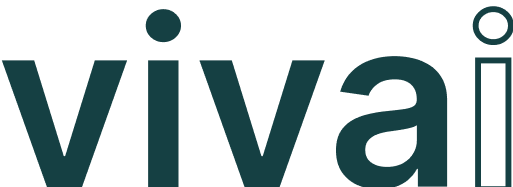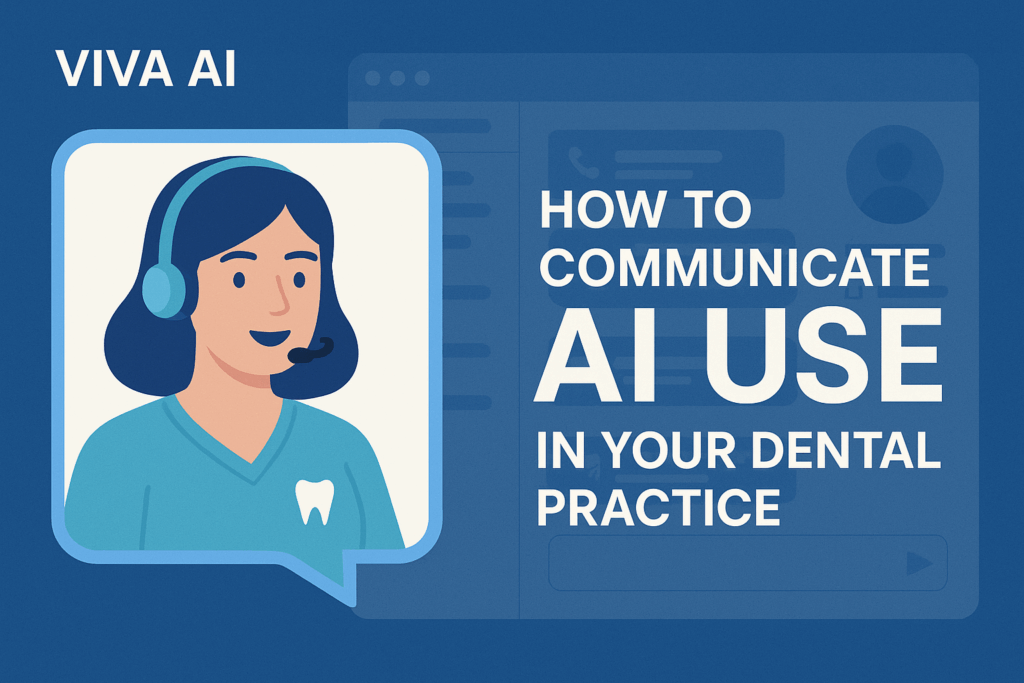In the dynamic world of dental practices, artificial intelligence (AI) is revolutionizing how offices manage patient interactions and administrative tasks. At Viva AI, our AI-powered dental receptionist and communication tools are designed to handle calls, texts, scheduling, reminders, and insurance inquiries seamlessly, allowing your team to focus on delivering outstanding in-office care. While these innovations bring efficiency and convenience, clear communication with patients about AI use is essential for building trust, ensuring privacy, and creating a positive experience for all.
We’ve worked with dental offices nationwide to implement our solutions, and we’ve seen firsthand how thoughtful transparency around AI can strengthen patient relationships and smooth operations. In this post, we’ll share practical tips for communicating AI use in your practice’s communications, tailored to tools like our virtual receptionist, to help you minimize risks and highlight the benefits.
Why Transparent Communication Matters in AI Adoption
Transparency builds confidence and fosters loyalty in any healthcare setting. When patients know how AI supports their interactions with your office—such as managing appointments or responding to inquiries—they feel more secure and valued. This is particularly relevant for administrative AI, where privacy and data handling are key concerns.
Viva AI’s tools, for instance, automate 24/7 patient communications, centralize messages in a smart inbox, and optimize scheduling to reduce no-shows and streamline workflows. By openly explaining these features, you comply with standards like HIPAA, address potential questions about data privacy, and showcase your practice’s commitment to modern, efficient service. The outcome? Happier patients, fewer misunderstandings, and a more robust practice.
Proactive disclosure also helps dispel any myths. Patients might have questions about how AI processes their information, but addressing this early reinforces that AI is a helpful assistant enhancing accessibility and personalization, all while keeping human oversight at the core.
Best Practices for Communicating AI Use to Patients
Incorporating AI communication into your patient processes is straightforward and rewarding. Here are effective strategies inspired by successful implementations of Viva AI in dental offices:
1. Update Patient Consent Forms with Clear Language
Begin with your intake forms by adding simple disclosures about AI in communications. Use straightforward wording to keep it approachable and reassuring.
For example: “Our practice uses AI tools, like Viva AI’s virtual receptionist, to manage calls, texts, appointment scheduling, reminders, and insurance inquiries efficiently. This ensures 24/7 availability and personalized service while upholding strict privacy standards under HIPAA. By signing, you consent to these technologies supporting your interactions with our office.”
This step informs patients right away, aligns with privacy regulations, and sets a foundation of trust.
2. Incorporate Discussions During Appointments
Weave AI explanations into natural conversations during visits. When discussing upcoming appointments or follow-ups, mention how AI helps: “We’re using Viva AI to handle scheduling and reminders, so you get timely texts or calls that fit your preferences, making it easier to stay on top of your care.”
This approach personalizes the explanation, invites questions, and emphasizes benefits like convenience and reliability, showing AI as an enhancer of your team’s efforts.
3. Develop Patient-Friendly FAQs and Resources
Provide accessible materials, such as FAQs on your website or in-office handouts, to cover common queries about your AI tools:
- What does Viva AI do in our practice? It manages patient communications, including calls, texts, scheduling, and reminders, to make interactions smoother and more efficient.
- How does AI protect my privacy? All data is handled securely and compliantly with HIPAA, using encryption and safeguards to protect your information.
- Will AI change how I communicate with the office? AI supports faster, more accessible responses, but our team is always involved for personalized care.
These resources let patients explore details at their leisure, promoting transparency without overwhelming in-person discussions.
4. Train Your Team for Consistent Messaging
Equip your staff with training on discussing Viva AI positively. Highlight advantages like multilingual support and 24/7 availability, ensuring everyone from reception to clinicians delivers a unified, enthusiastic message. This consistency reinforces trust across all interactions.
5. Monitor and Adapt Based on Feedback
Collect patient input through quick surveys or feedback forms post-visit. Use this to refine your communication strategies, keeping them aligned with evolving needs and AI updates from Viva AI.
The Benefits of Getting It Right: Enhanced Trust and Practice Efficiency
Effective communication about AI doesn’t just reduce risks—it elevates your practice. Patients who understand tools like Viva AI’s receptionist are more engaged, leading to better appointment adherence, positive reviews, and stronger loyalty. From our experience, offices using our solutions see reduced administrative burdens, fewer missed calls, and improved patient satisfaction, turning AI into a key asset for growth.
In essence, open dialogue about AI in communications positions your dental office as innovative and patient-focused. It’s about leveraging technology to support the personal connections that define great dentistry.
Ready to enhance your practice’s communications with Viva AI while prioritizing clear, confident patient interactions? Visit us today to learn how our AI dental receptionist can transform your operations.

